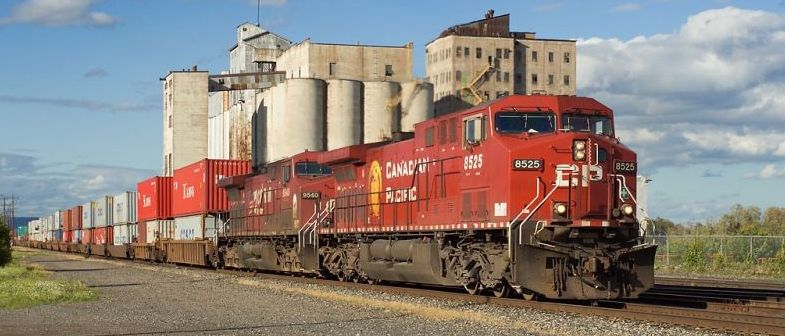
Train Addiction Help Line: 1.866.840.7777
NARC - N Scale - NSC Potash Service 4300 Cu. Ft. 3 Bay Covered Hopper - Version 6 - Canpotex (CNPX) (Gray w/Black Lettering, Green Logo, Yellow Visibility Stripes) 1 Road Numbers 9 Panels/Short Sill 1000 Series Moose Jaw Thunder Creek Club - single car (SKU 11-12006003-single)
Available On: January 1, 2019

Version 6 Car
HISTORY of the THUNDER CREEK MODEL RAILROAD CLUB
The club was started in 1967 by Rick Percy and consisted of 5 members, all of whom were employed at CFB Moose Jaw. In the beginning, the meetings where held in members’ home and at a hall on South Hill. The club membership has been as high as 27 and is currently approximately 20. The club meets every Tuesday from September thru June at the Western Development Museum.
In the early years the club displayed at local shopping malls and also attended other model railroad shows in Saskatchewan. The club was also fortunate to display at the Western Development Museum as part of their annual car show.
In 1979, the club built some N Scale modules and later they were converted to HO scale because it is a more popular scale. They were displayed at the Moose Jaw Art Museum Gallery and along with posters found in the CPR Train "The Canadian".
In May 1987 the NMRA Convention was hosted in Moose Jaw. This was a 3 day event that included Proto-type tours of the CPR yards, along with clinics and displays related to Model Railroading.
Since 1995,the club has convened annual shows with local model railroaders and displays by modelers from across Saskatchewan and Western Canada.
The club modules were used until 1997 and were on permanent display in the museum until 2005.
To help celebrate the Saskatchewan Centennial, the club decided to replace the original modules. Our new modules represent the same scene during four different periods in the last century.
Our club is dedicated to the promotion of the Model Railroading hobby in the City of Moose Jaw and the surrounding District of Thunder Creek.
We have a work/storage space at the Museum and while there we work on the permanent modules built and maintained by the Club over the years. We also work on the travelling modules that we take to the various model railroad shows we attend.
Introduced in 1999 by National Steel Car, this car is seen in large numbers across Canada and the United States. It was developed specifically to address the need for additional rail transport capacity caused be the growing Potash market.
Previously, the majority of Canadian Potash rail transport was accomplished with the larger Hawker Siddeley 4550 cu ft Cylindrical Hoppers and similar cars from National Steel Car and Marine Industries.
Though the car is a newer design, it has less capacity than the Hawker Siddeley style cars. However it makes up for this in a shorter car length of only 47 feet versus the Hawker Siddeley style cars at 59 feet. This allows a train of these cars to carry more Potash then a train of comparable length made up of the Hawker Siddeley style hoppers.
These car operates at a gross rail load of 286,000 pounds, the current maximum limit. However, they are actually designed for a gross rail load of 315,000 pounds. They are currently produced with 100 ton nominal capacity trucks to suit present 286,000 lb. gross rail loading. If the maximum weight limit is increased, these cars can be upgraded with 125 ton trucks allowing for maximum cargo capacity going forward.
These cars are currently operated in large numbers by both Canpotex and the Potash Corporation of Saskatchewan, and in smaller numbers by other operators. To date, over 7,000 have been produced in six versions. These cars are seen on a daily basis traveling across the Canadian Pacific, Canadian National, BNSF, CSX, NS and Union Pacific rail networks.
The second production run for PotashCorp, the sixth overall, was also 1000 cars, built between September 2012 and December 2012. They are also owned by General American Marks and include road numbers POTX 2000 to POTX 2999.
The 2000 Series cars are the fifth version of the car type to be produced by National Steel Car. Design revisions include redesigned A & B car ends, modified ladder rungs, shortened length side sills and 2 diagonal rounded rectangle shaped openings in floor plate over end wheels of trucks
Modeling use for prototype accuracy:
- The 2000 Series PotashCorp POTX (Version 5, road numbers 2000-2999) can be modeled from late 2012. They generally only run in unit train operations mixed with 1000 Series PotashCorp POTX (Version 4, road numbers 1000-1999).
- They can also be seen in small cuts or single cars going to various industires on mixed freights or local transfers.
- They do on occassion also run in Canpotex unit trains, so they can be mixed with all paint schemes with the exclusion of the early Canpotex PTEX scheme which had be phased out by the introduction of these cars.
Version 5 Car Prototype Features:
- Car length of 47 feet
- Car capacity of 4300 cu. ft.
- Circular roofwalk tread pattern
- Long cross roofwalk panels running the full width of the car between short side roofwalk panels
- Raised roof hatches
- 12 running board supports
- 8 side panel sheets
- Shortend length side sills
- A car end configuration 3
- B car end configuration 2
- Modified ladder rungs
- 2 diagonal rounded rectangle shaped openings in floor plate over end wheels of trucks
- Angular shape gaps between hopper bays
- Barber S2 DH trucks
Design changes in Version 6 cars:
- Shortend length side sills compared to all previous versions of the car
- A car end configuration 3 in place of A car end configuration 2 found on Version 4
- B car end configuration 2 in place of B car end configuration 1 found on all previous versions of the car
- Modified ladder rungs replace the non-wraparound ladder rungs found on Version 4 of the car
- 2 diagonal rounded rectangle shaped openings in floor plate over end wheels of trucks added, not present on Versions 2, 3 & 4 of the car, smaller and different shape to those generally in the same location on Version 1 of the car
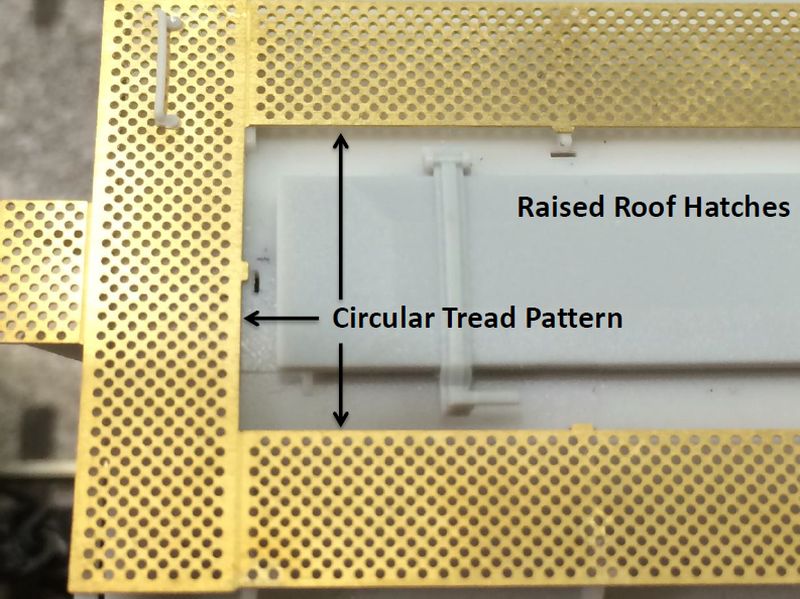
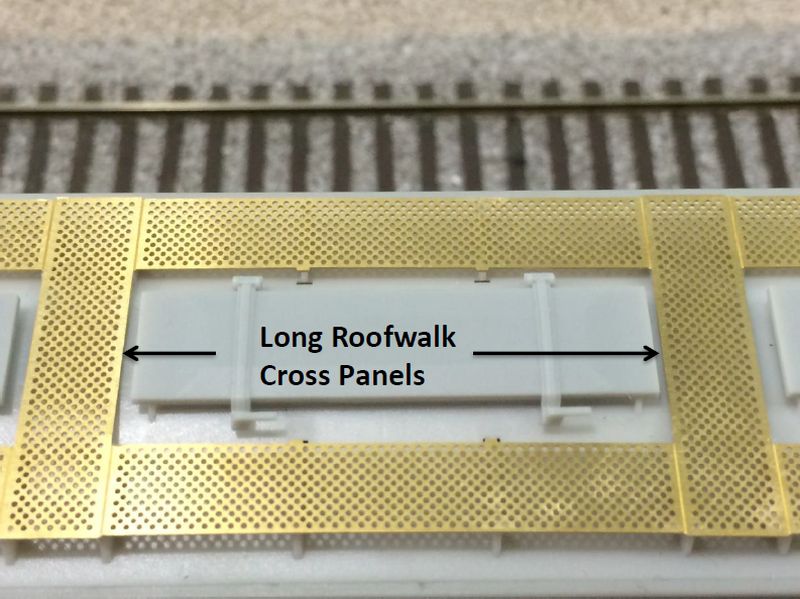
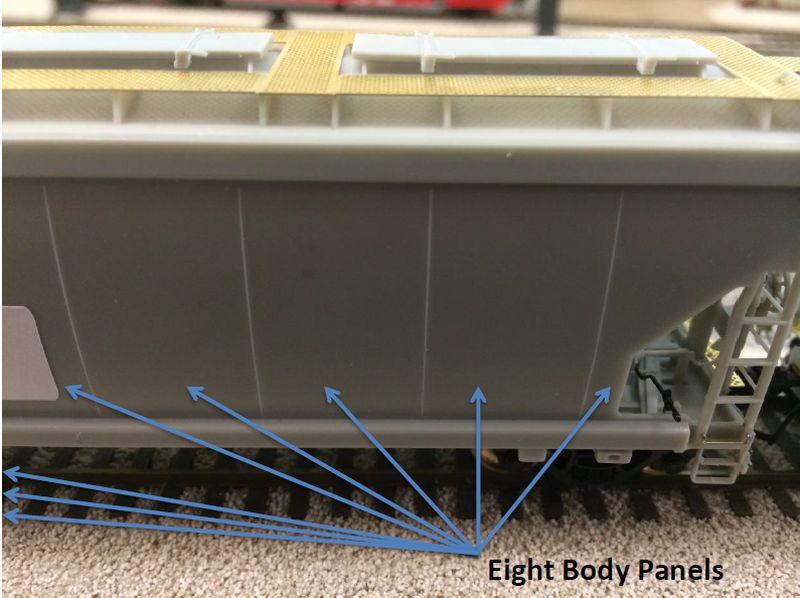
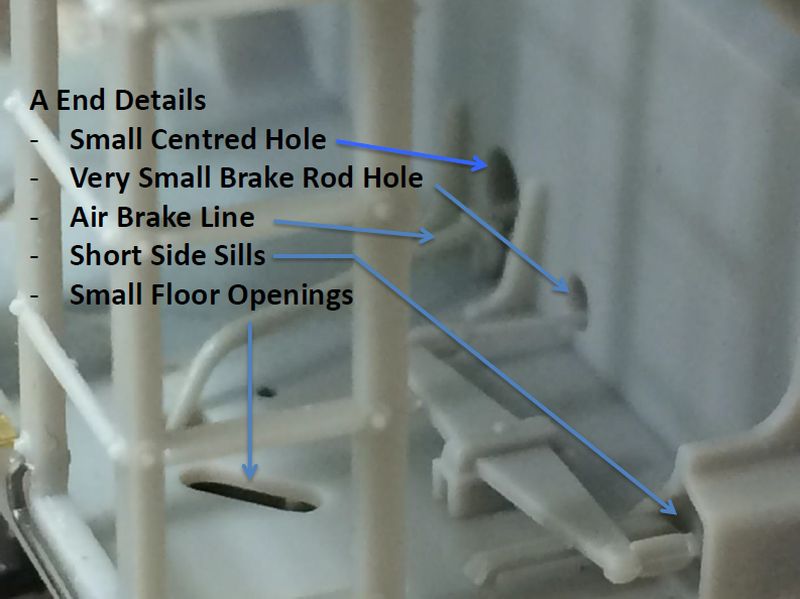


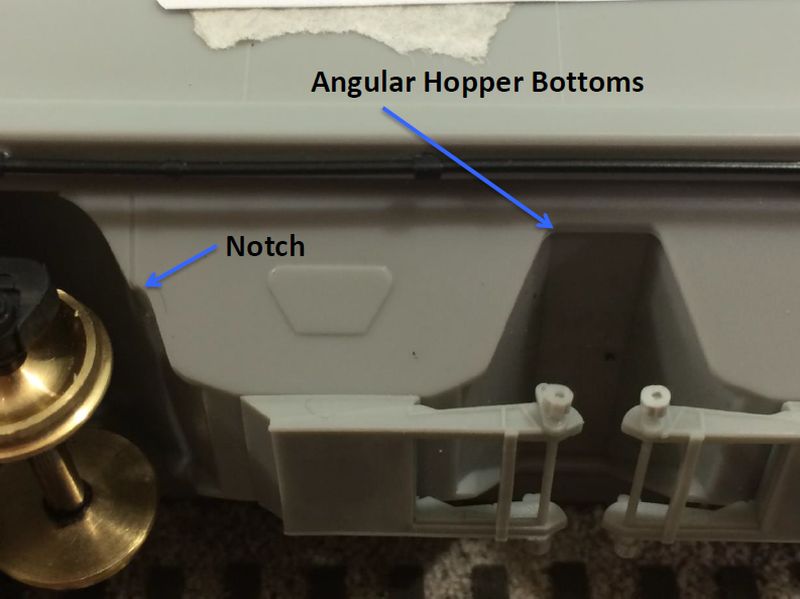
Model Features:
- Modern model accuracy of this modern prototype, this is the first time this car has been produced in any scale.
- Fully researched and prototypically accurate details
- Many separately applied detail parts, including photo etched brass and lost wax metal castings
- Accurate painting and lettering, including correct graphics, fonts and locations per prototype
- Micro-Trains couplers
- High performance trucks and metal wheelsets for reliable operation
- Properly weighted for smooth tracking and superior performance
More Information
For more information about the National Steel Car Potash Service 3 Bay Covered Hopper and their use by Canpotex & PotashCorp, including prototype videos & modeling notes, click on the links below:
NSC Potash Service Hopper Guide
Canpotex Hopper Reference Page
PotashCorp Hopper Reference Page
(Photo by: Loadstone)
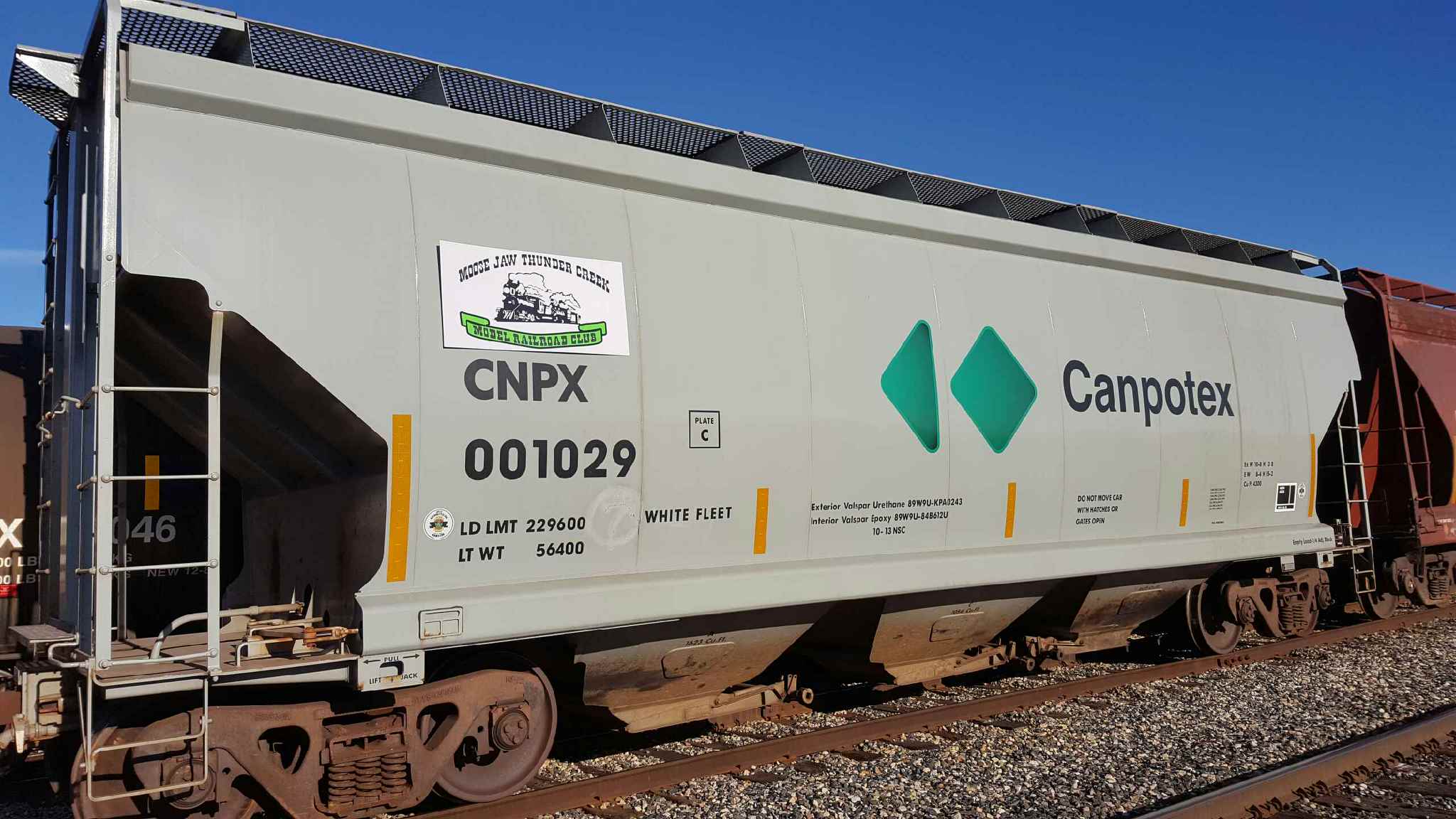
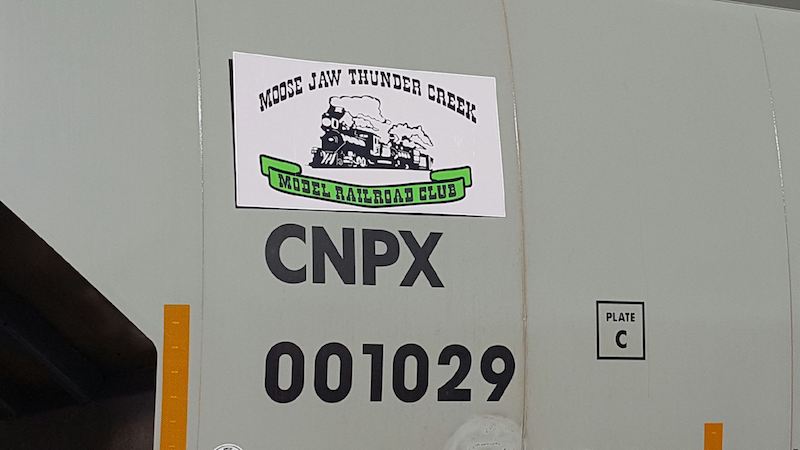
$29.98 US